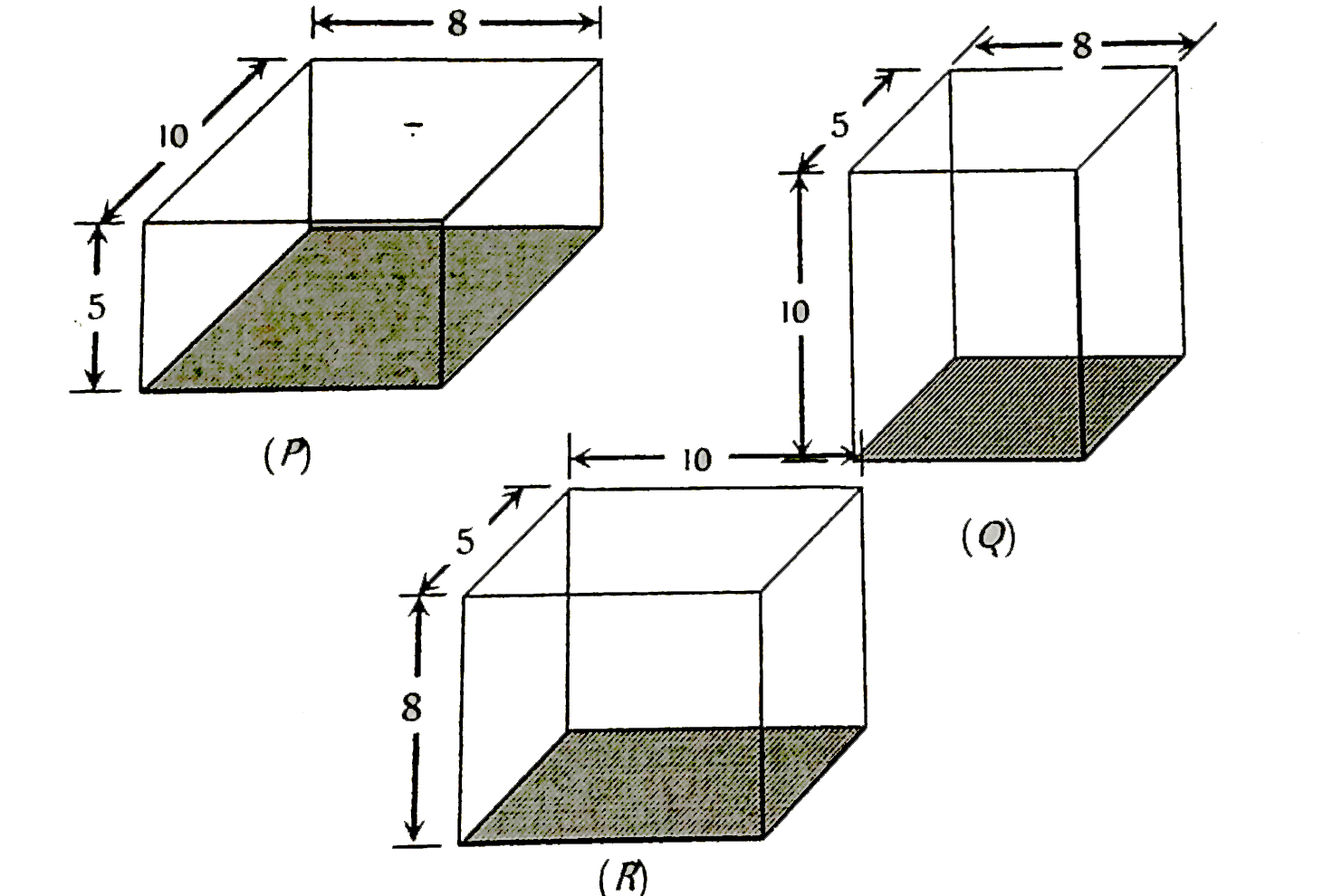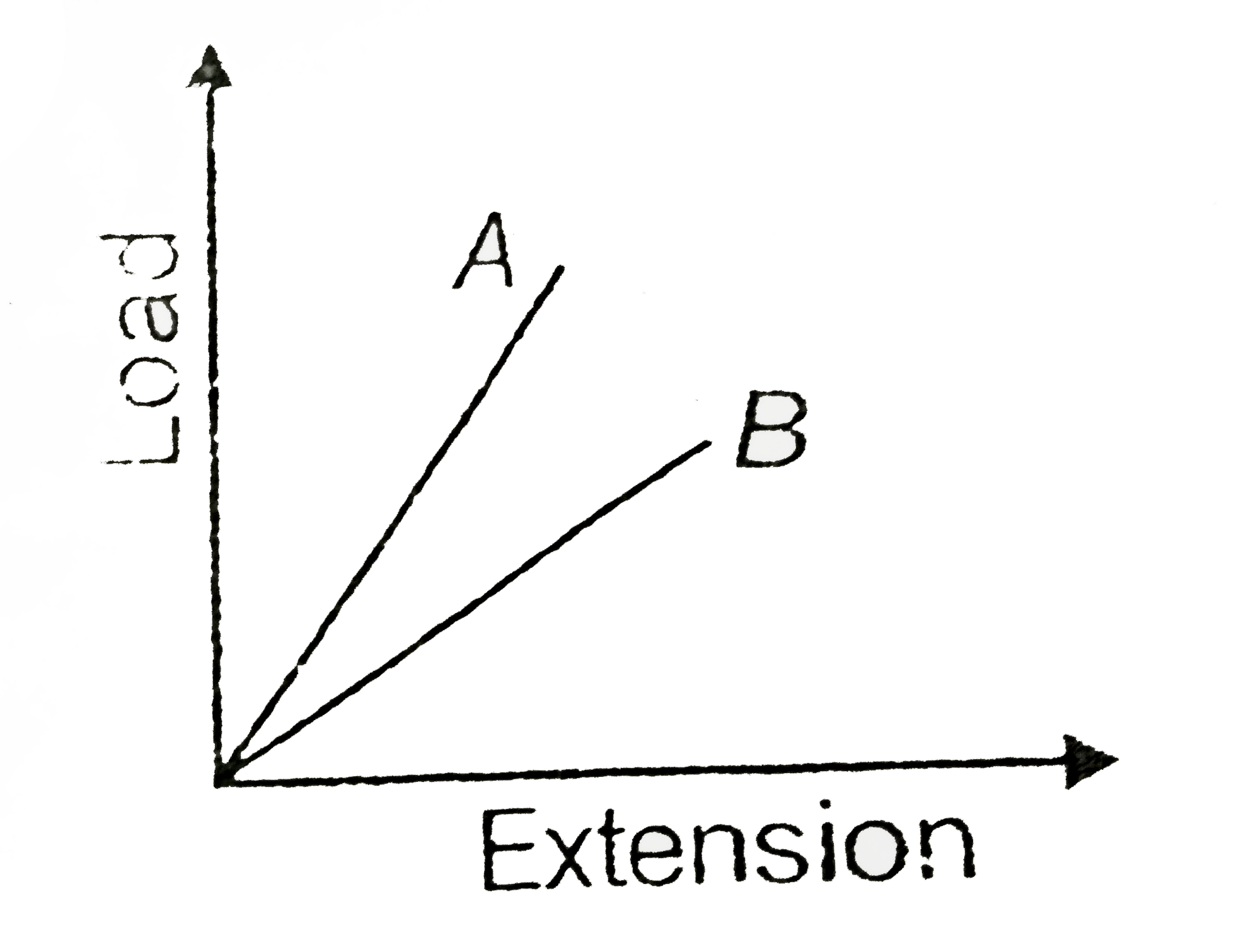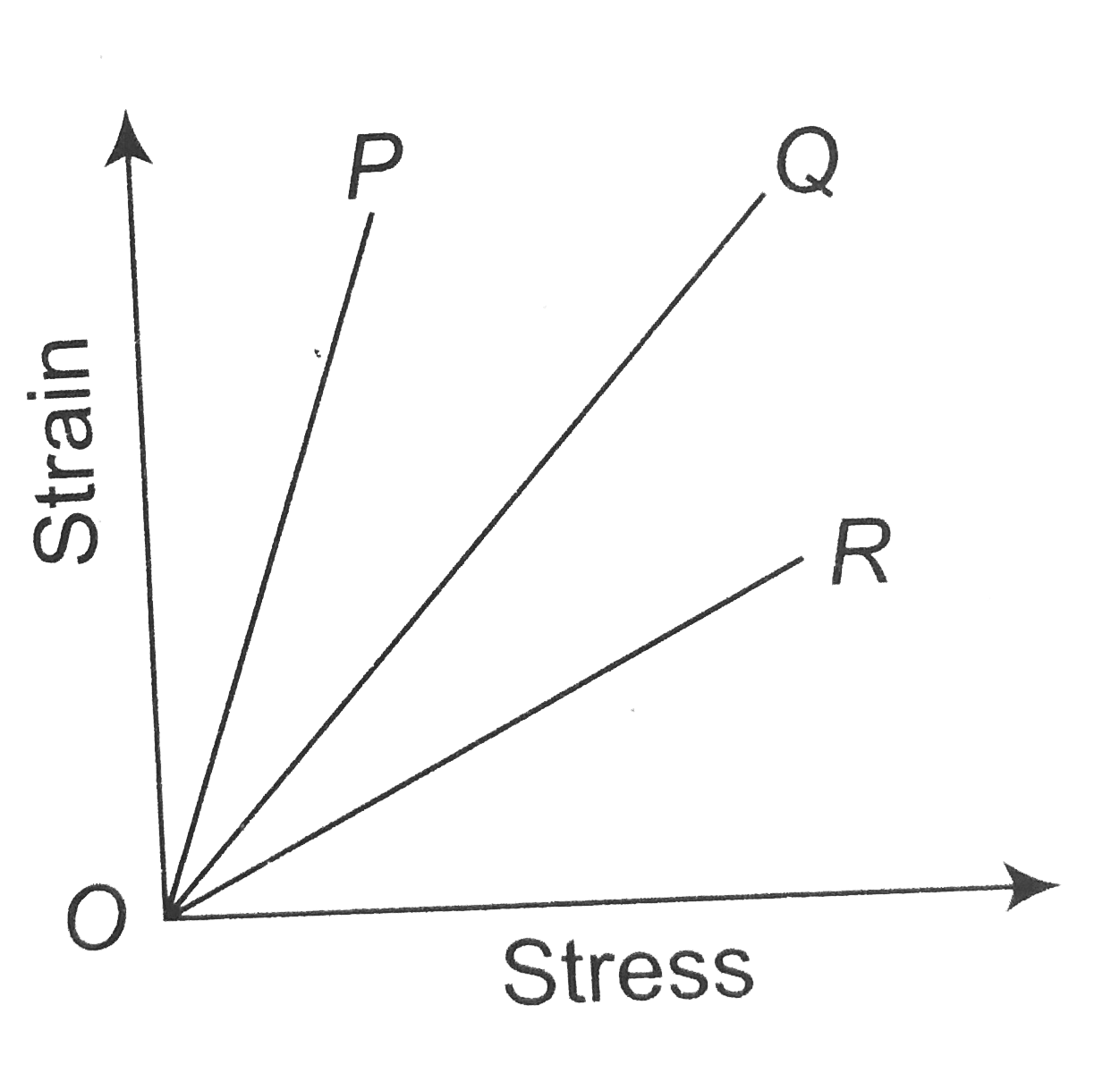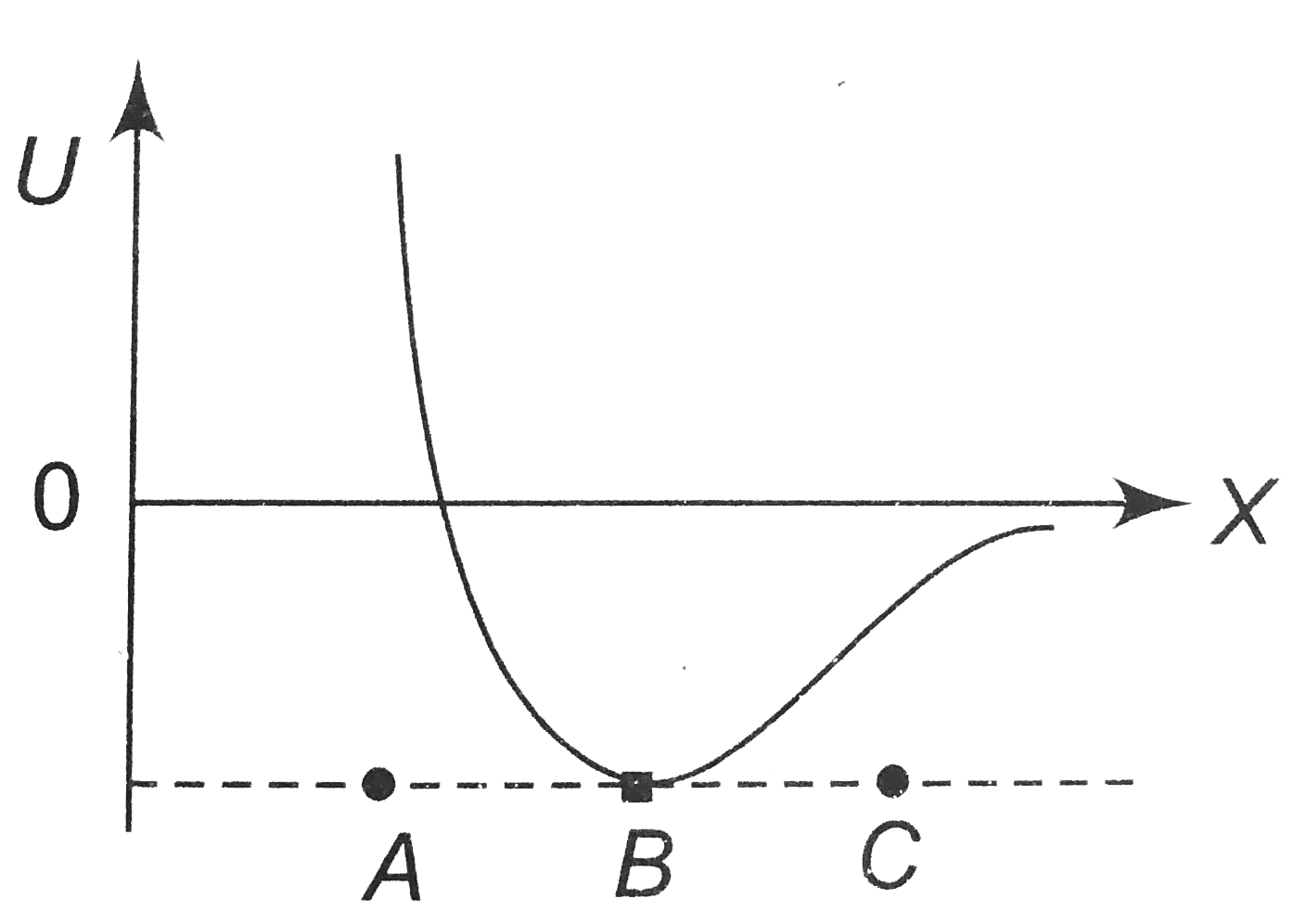Complete Solutions to Chapter Exercise of chapter ELASTICITY of Class 11 book with complete answers and questions
| Class 11 | PHYSICS |
| Chapter | ELASTICITY |
| DC PANDEY NEET | Chapter Exercise |
| Number Of Questions | 73 |
| Academic Year | 2023-24 |
What is the Young's modulus for a perfect rigid body?
View SolutionThe valve of Poisson's ratio lies between
View SolutionThe only elastic modulus that applies to fluids is
View SolutionModulus it rigidity of ideal liquids is
View SolutionThe work done in stretching an elastic wire per unit volume is or strain energy in a stretched string is
View SolutionThe maximum load a wire can withstand without breaking, when its length is reduced to half of its original length, will
View SolutionDetermine the force required to double the length of the steel wire of area of cross-section `5 xx 10^(-5) m^(2)`. Give Y for steel `= 2 xx 10^(11) Nm^(-2)`.
View SolutionLongitudinal stress of `1 kg//mm^(2)` is applied on a wire. The percentage increase in length is `(Y = 10^(11) N//m^(2))`
View SolutionThe Young's modulus of a wire Y. If the energy per unit volume is E, then the strain will be
View SolutionWhen a force is applied at one end of an elastic wire, it produce a strain E in the wire. If Y is the Young's modulus of the material of the wire, the amount of energy stored per unit volume of the wire is given by
View SolutionThe young's modulus of a wire of length (L) and radius (r ) is Y. If the length is reduced to` L/2` and radius `r/2` , then its young's modulus will be
View SolutionThe Young's modulus of a wire is numerically equal
View SolutionThe length of an iron wire is L and area of cross-section is A. The increase in length is `l` on applying the force F on its two ends. Which of the statement is correct
View SolutionThe graph show the behaviour of a length of wire in the region for which the substances obeys Hooke's law. `P` and `Q` represent

View SolutionA metal block is experiencing an atmospheric pressure of `1 xx 10^(5)N//m^(2)`, when the same block is placed vacuum chamber, the freactional change in its volume is (the bulk modulus of metal is `1.25 xx 10^(11) N//m^(2)`)
View SolutionThe bulk modulus of water is `2.1xx10^(9) Nm^(-2)`. The pressure required ot increase the density of water by 0.1% is
View SolutionIf the Young's modulus of the material is 3 times its modulus of rigidity, then its volume elasticity will be
View SolutionFor a given material, the Young's modulus is 2.4 times that of the modulus of rigidity. Its Poisson's ratio is
View SolutionMark the wrong statement
View SolutionThe increase in length on stretching a wire is `0.05 %`. If its poisson's ratio is 0.4, then its diameter
View SolutionA spring is stretched by applying a load to its free end. The strain produced in the spring is
View SolutionAn elastic material of Young's modulus Y is subjected to a stress S. The elastic energy stored per unit volume of the material is
View SolutionThe temperature of a wire is doubled. 'The Young's modulus of elasticity will
View SolutionWhen a pressure of 100 atmosphere is applied on a spherical ball, then its volume reduces to `0.01%`. The bulk modulus of the material of the rubber in dyne/`cm^2` is
View SolutionA 5 metre long wire is fixed to the ceiling. A weight of `10kg` is hung at the lower end and is `1metre` above the floor. The wire was elongated by `1mm`. The energy stored in the wire duw to streching is
View SolutionA rectangular block of size `10 cm xx 8 cm xx 5 cm` is kept in three different positions P,Q and R in turns as shown in the figure. In each case, the shaded area is rigidly fixed and a definite force F is applied tangentially to the opposite face to deform the black. The displacement of the upper face will be

View SolutionA uniform cube is subjected to volume compression. If each side is decreased by 1% , then bulk strain is
View SolutionThe longitudinal extention of any elastic material is very small.In order to have an appericiable change ,the material must be in the form of
View SolutionThe maximum load that a wire can sustain is W. If the wire is cut to half its value, the maximum load it can sustain is
View Solutionwhen a metal wire elongates by hanging a load Mg on it , the gravitational poyential energy of mass M decreases by Mgl. This energy appears
View SolutionA ball falling in a lake of depth 200m shown 0.1% decrease in its volume at the bottom .What is the bulk modulus of the materialof the ball
View SolutionA heavy mass is attached to a thin wire and is whirled in a vertical circle. The wire is most likely to break
View SolutionTwo wires of copper having the length in the ratio `4 : 1` and their radii ratio as `1 : 4` are stretched by the same force. The ratio of longitudinal strain in the two will be
View SolutionThe interatomic distance for a metal is `3 xx 10^(-10)` m. If the interatomic force constant is `3.6 xx 10^(-9) N//Å`. The the Young's modulus in `N//m^(2)` will be
View SolutionYoung's modulus of rubber is `10^(4) N//m^(2)` and area of cross section is `2 cm^(2)`. If force of `2 xx 10^(5) dyn` is applied along its length, then its final length becomes
View SolutionTwo wires of same diameter of the same material having the length `l` and `2l` If the force `F` is applied on each, the ratio of the work done in two wires will be
View SolutionA force of 200 N is applied at one end of a wire of length 2m and having area of cross-section `10^(-2) cm^(2)`. The other end of the wire is rigidly fixed. If coefficient of linear expansion of the wire `alpha=8xx10^(-6)//.^(@)C` and Young's modulus `Y=2.2xx10^(11)N//m^(2)` and its temperature is increased by `5^(@)C`, then the increase in the tension of the wire will be
View SolutionA beam of electrons moving with a momentum p enters a uniform magnetic field of flux density B perpendicular to its motion. Which of the following statement(s) is (are) true?
View SolutionThe temperature of a wire of length 1 metre and area of cross-section `1 cm^(2)` is increased from `0^(@)C` to `100^(@)C`. If the rod is not allowed to increased in length, the force required will be `(alpha=10^(-5)//.^(@)C and Y =10^(11) N//m^(2))`
View SolutionCalculate the apprroximate change in density of water in a lake at a depth of `400 m ` below the surface. The density of water at the surface id `1030 kg//m^(3)` and bulk modulus of water is `2xx10^(9) N//m^(2)`.
View SolutionA load suspended by a massless spring produces an extention of xcm in equilibrium.When it is cut into two unequal parts ,the same load produces an extention of 7.5cm when suspended by the larger part of length 60cm .When it is suspended by the smaller part,the extention is 5cm.Then
View SolutionA steal wire of cross-section area `3xx10^(-6) m^(2)` can withstand a maximum strain of `10^(-3)` .Young's modulus of steel is `2xx10^(11) Nm^(-2)` .The maximum mass this wire can hold is
View SolutionThe load versus elongation graph for four wires of the same material is shown in the figure. The thickest wire is represented by

View SolutionTwo wires of the same material and length but diameter in the ratic 1: 2 are stretched by the same load. The ratio of elastic potential energy per unit volume for the two wires is
View SolutionA stress of `10^(6) N//m^(2)` is required for breaking a material. If the density of the material is `3 xx 10^(3) Kg//m^(3)`, then what should be the minimum length of the wire made of the same material so that it breaks by its own weight `(g = 10m//s^(2))`
View SolutionA cable is replaced by another cable of the same length and material but of double the diameter.
(i) Under a given load which cable will show greater extension?
(ii) How many times the second cable can support the maximum load without exceeding the elastic limit?
View SolutionA uniform steel rod of cross- sectional area `A` and `L` is suspended so that it hangs vertically. The stress at the middle point of the rod is
View SolutionA rubber pipe of density `1.5 xx 10^(3) N//m^(2)` and Young's modulus `5 xx 10^(6) N//m^(2)` is suspended from the roof. The length of the pipe is 8m. What will be the change in length due to its own weight.
View SolutionIn the given figure, if the dimensions of the two wires are same but materials are different, then Young's modulus is

View SolutionThe stress versus strain graphs for wires of two materials A and B are as shown in the figure. If `Y_(A) and Y_(B)` are the younng's moduli of the materials, then

View SolutionAn elevator cable is to have a maximum stress of `7xx10^(7) Nm^(-2)` to allow for appropriate safety factors. Its maximum upward acceleration is `1.5 ms^(-2)` . If the cable has to support the total weight of 2000 kg of a loaded elevator , the area of cross-section of the cable should be
View SolutionThe following four wires are made of same material. Which of these will have the largest extension when the same tension is applied?
View SolutionA copper wire `(Y=10^(11) Nm^(-2))` of length 8 m and a steel wire `(Y=2xx10^(11) Nm^(-2))` of length 4 m, each of `0.5 cm^(2)` cross-section are fastened end to end and stretched with a tension of 500 N. choose the correct option.
View Solution
The strain stress curves of three wires of different materials are shown in the figure. P, Q and R are the elastic limits of the wires. The figure shown that
View SolutionA string 1m long is drawn by a 300 Hz vibrator attached to its end. The string vibrates in three segments. The speed of transverse waves in the string is equal to
View Solution
The potential energy `U` between two molecules as a function of the distance `X` between them has been shown in the figure. The two molecules are
View SolutionThe diagram shows a force-extension graph for a rubber band. Consider of the following statements

I. It will be easier to compress this rubber than expand it
II. Rubber does not return to its original length after it is streched
III. The rubber band will get heated id it is streched and realeased
Which of these can be deduced from the graph
View SolutionConsider two cylindrical rods of identical dimensions, one of rubber and the other of steel. Both the rods are fixed rigidly at one end to the roof. A mass M is attached to each of the free ends at the centre of the rods.
View SolutionThe adjacent graph shows the extension `Deltal` of a wire of length 1m, suspended from the f top of a roof at one end and with a loaf w connected to the other end. If the cross-sectional area of the wire is `10^(6) m^(2)` calculate the young's modulus of the material of the wire .

View SolutionA brass of length `2 m` and cross-sectional area `2.0 cm^(2)` is attached end to end to a steel rod of length and cross-sectional area `1.0 cm^(2)`. The compound rod is subjected to equal and oppsite pulls of magnitude `5 xx 10^(4) N` at its ends. If the elongations of the two rods are equal, the length of the steel rod `(L)` is
{`Y_(Brass) = 1.0 xx 10^(11) N//m^(2) ` and `Y_(steel) = 2.0 xx 10^(11) N//m^(2)`
View SolutionOne end of uniform wire of length `L` and of weight `W` is attached rigidly to a point in the roof and a weight `W_(1)` is suspended from its lower end. If `s` is the area of cross section of the wire, the stress in the wire at a height (`3L//4`) from its lower end is
View SolutionThe wire of a Young's modules appartus is elongated by 2 mm when a brick is suspended from .it When the brick is immersed in water the wire contracts by 0.6mm Calculate the density of the brick given that the density of water is `1000 kg m^(-3)`
View SolutionA rigid bar of mass M is supported symmetrically by three wires each of length l. Those at each end are of copper and the middle one is of iron. The ratio of their diameters, if each is to have the same tension, is equal to
View SolutionA wire of leng:h L has a linear mass density `mu` and area of cross-section A and the Youngs modulus Y is susperded vertically from a rigid support. The extension produced in the wire due to its own weight is
View SolutionThe density of a metal at normal pressure is `rho`. Its density when it is subjected to an excess pressure p is `rho'` . If B is the bluk modulus of the metal, then find the ratio `rho'//rho`.
View SolutionOne end of a long metallic wire of length L is tied to the ceiling. The other end is tied to massless spring of spring constant k. A mass m hangs freely from the free end of the spring . The area of cross-section and Young's modulus of the wire are A and Y respectively . If the mass is slighty pulled down and released , it will oscillate with a time period T equal to
View SolutionThe length of a rubber cord is `l_(1)` m when the tension is 4 N and `l_(2)` m when the tension is 6 N.The length when the tension is 9 N, is
View SolutionA uniform elastic plank moves due to a constant force `F_(0)` applied at one end whose area is `S`. The Young's modulus of the plank is `Y`. The strain produced in the direction of force is
View SolutionA uniform pressure p is exerted on all sides of a solid cube of a material at temprature `t^(@)C`. By what amount should the temperature of the cube be raised in order to bring its original volume back to the value it had before the pressure was applied ? K is the bulk modulus and `alpha` is the coefficient of linear expansion of material of solid cube.
View SolutionA block of weight `W` produces an extension of `9cm` when it is hung by an elastic spring of length of `60cm` and is in equilibrium. The spring is cut into two parts, one of length `40cm` and the other of length `20cm`. The same load `W` hangs in equilibrium supported by both parts as shwon in figure. The extension in `cm` noe is

View SolutionA rectangular frame is to be suspended symmetrically by two strings of equal length on two supports (figure). It can be done in one of the following three ways,

The tension in the strings will be
View SolutionTwo wires of the same material (Young's modulus=Y) and same length L but radii R and 2R respectively are joined end to end and a weight w is suspended from the combination as shown in the figure. The elastic potential energy in the system is

View SolutionA mild steel wire of length 2L and cross-sectional area A is stretched, well within elastic limit, horizontally between two pillars (figure). A mass m is suspended from the mid-point of the wire. Strain in the wire is

View Solution
Chapter Exercise questions and complete solutions for chapter ELASTICITY of DC PANDEY ENGLISH of Class 11
All Exercises from DC PANDEY NEET Class 11 PHYSICS ELASTICITY
- Assertion And Reason
- Chapter Exercise
- Check point 12.1
- Check point 12.2
- Check point 12.3
- Example
- Exercise 15.1
- Exercise 15.2
- Level 1 Single Correct
- Level 1 Subjective
- Level 2 Comprehension Based
- Level 2 More Than One Correct
- Level 2 Single Correct
- Level 2 Subjective
- Match the columns
- Medical entrances s gallery
- MiscellaneousExamples
- Solved Examples